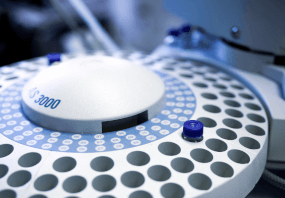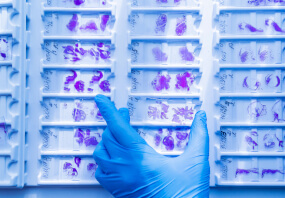General description
Ampicillin sodium salt, belonging to the extended-spectrum β-lactam family, stands as a semisynthetic derivative of penicillin with versatile applications as a broad-spectrum antibiotic. It exerts inhibitory effects on bacterial cell wall synthesis by binding to penicillin-binding proteins (PBPs), thereby impeding peptidoglycan synthesis—an integral process in the formation of the bacterial cell wall. This antibiotic demonstrates activity against an extensive spectrum of bacteria, encompassing both Gram-positive and Gram-negative strains such as E. coli, β-lactam sensitive vancomycin-resistant Enterococcus (VRE), Staphylococcus aureus, and Streptococcus pneumoniae.
In research, ampicillin plays a pivotal role in microbiological, biochemical, and cell culture investigations. Its utilization in laboratories extends to studying antibiotic resistance and penetration limitations, exploring the synergistic interactions between multiple antibiotics, and serving as a crucial component for the selection and maintenance of recombinant plasmids in E. coli. Through these applications, ampicillin sodium salt contributes significantly to advancing the understanding of antibiotic efficacy, bacterial responses, and molecular processes, making it an indispensable tool in various facets of scientific research.
Application
Ampicillin is a semi-synthetic derivative of penicillin that functions as a broad-spectrum antibiotic. It has been used to study antibiotic resistance and penetration limitations, the synergy between multiple antibiotics, certain bloodstream infections, and has been used to develop PCR assays to detect resistance genes in cerebrospinal fluid.
Recommended for antibacterial use in cell culture media at 100 mg/L.
Recommended for use in ampicillin-resistance studies at 20-125 μg/ml.
Biochem/physiol Actions
Mode of Action: This is a ß-lactam antibiotic that inhibits bacterial cell-wall synthesis by inactivating transpeptidases on the inner surface of the bacterial cell membrane.
Mode of Resistance: Administration with ß-lactamase cleaves the ß-lactam ring of Ampicillin and inactivates it.
Antimicrobial Spectrum: Includes both gram-positive (similar to benzylpenicillin) and gram-negative bacteria (similar to tetracyclines and chloramphenicol.
Features and Benefits
- High quality antibiotic suitable for multiple research applications
- Broad-spectrum antibiotic
- Inhibits bacterial cell-wall synthesis
- Active against Gram-positive and Gram-negative bacteria
- Commonly used in Cell Culture, Cell Biology and Biochemical research
Packaging
5g, 25g, 100g
Caution
This product has been reported stable as supplied at 25°C at 43% and 81% relative humidity for six weeks. It is stable at 37°C for three days. Additional studies have shown that the stability of Ampicillin in solution is a function of pH, temperature and the identity of the buffer. It′s activity is quickly lost when stored above pH 7. Optimal storage conditions are suggested as 2-8°C, and pH 3.8-5 where its activity was retained at 90%+ for a week.
Preparation Note
Ampicillin is reported as slightly soluble in water, practically insoluble in alcohol, chloroform, ether and fixed oils but soluble in dilute acids or bases. The solution should not be autoclaved; a stock solution should be sterilized through filtration and stored frozen, where it will be stable for months.
Other Notes
Keep container tightly closed in a dry and well-ventilated place. Keep in a dry place.
- UPC:
- 51102800
- Condition:
- New
- Availability:
- 3-5 Days
- Weight:
- 1.00 Ounces
- HazmatClass:
- No
- MPN:
- A0166-25G
- CAS:
- 69-52-3












